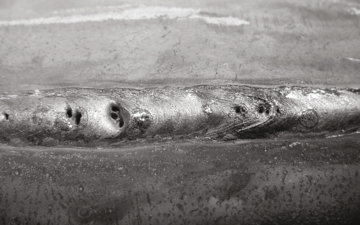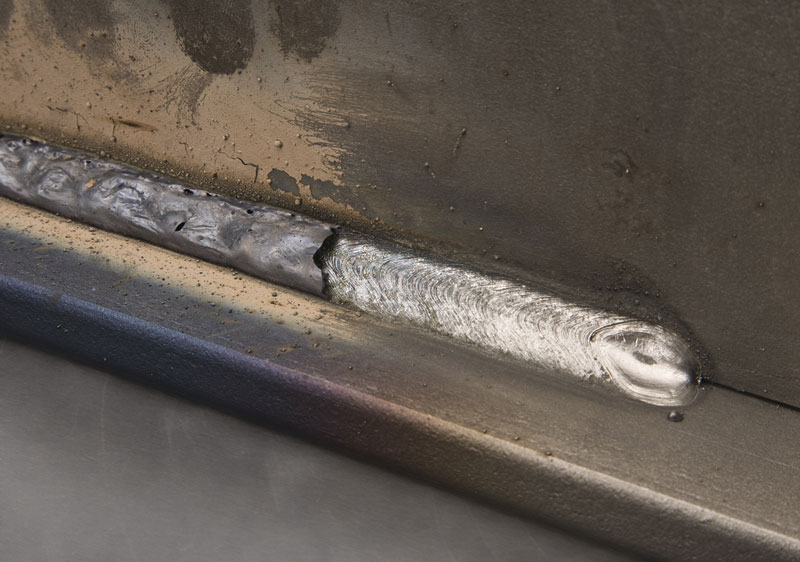Understanding Porosity in Welding: Exploring Causes, Impacts, and Prevention Methods
As specialists in the welding market are well conscious, understanding the causes, effects, and prevention techniques connected to porosity is crucial for attaining durable and dependable welds. By delving right into the root creates of porosity, analyzing its destructive effects on weld quality, and exploring efficient prevention approaches, welders can enhance their expertise and skills to generate high-quality welds continually.
Typical Root Causes Of Porosity
Porosity in welding is largely brought on by a combination of variables such as contamination, improper shielding, and insufficient gas insurance coverage throughout the welding process. Contamination, in the kind of dirt, grease, or rust on the welding surface, produces gas pockets when heated, leading to porosity in the weld. Improper protecting happens when the shielding gas, commonly used in processes like MIG and TIG welding, is not able to fully protect the molten weld pool from reacting with the bordering air, resulting in gas entrapment and succeeding porosity. Furthermore, inadequate gas coverage, typically due to wrong flow prices or nozzle positioning, can leave parts of the weld unsafe, permitting porosity to create. These elements collectively add to the formation of gaps within the weld, weakening its stability and possibly creating structural concerns. Recognizing and addressing these typical causes are critical action in stopping porosity and ensuring the quality and stamina of bonded joints.
Effects on Weld Top Quality
The visibility of porosity in a weld can significantly jeopardize the overall quality and stability of the bonded joint. Porosity within a weld develops gaps or tooth cavities that compromise the framework, making it a lot more susceptible to breaking, corrosion, and mechanical failing.
Moreover, porosity can prevent the effectiveness of non-destructive screening (NDT) techniques, making it testing to discover other flaws or interruptions within the weld. This can result in significant safety problems, especially in important applications where the structural honesty of the welded parts is paramount.

Avoidance Techniques Introduction
Provided the destructive influence of porosity on weld high quality, reliable prevention strategies are critical to maintaining the structural honesty of welded joints. In addition, picking the ideal welding specifications, such as voltage, current, and travel speed, can help decrease the danger of porosity development. By integrating these prevention strategies right into welding techniques, the incident of porosity can be substantially lowered, leading to more powerful and much more reliable welded joints.
Importance of Proper Protecting
Appropriate shielding in welding plays a vital function in protecting against climatic contamination and making sure the integrity of bonded joints. Protecting gases, such as argon, helium, or a combination of both, are typically used to secure the weld pool from responding with components airborne like oxygen and nitrogen. When these responsive aspects enter into call with the hot weld pool, they can cause porosity, causing weak welds with reduced mechanical buildings.

Insufficient protecting can cause different defects like porosity, spatter, and oxidation, compromising the structural honesty of the welded joint. Consequently, sticking to correct protecting methods is necessary to produce top notch welds with marginal flaws and make sure the long life and reliability of the bonded components (What is Porosity).
Monitoring and Control Techniques
Exactly how can welders successfully keep track of and regulate the welding process to guarantee optimum outcomes and protect against flaws like porosity? By continually keeping track of these variables, welders can determine deviations from the ideal conditions and make immediate adjustments to protect against porosity development.

In addition, applying proper training programs for welders is crucial for checking find out and regulating the welding process properly. What is Porosity. Enlightening welders on the value of maintaining consistent criteria, such as proper gas securing and travel rate, can assist protect against porosity issues. Normal analyses and certifications can likewise ensure that welders excel in monitoring and managing welding procedures
Additionally, the use of automated welding systems can improve tracking and control capacities. These systems can exactly control welding criteria, minimizing the chance of human error and guaranteeing constant weld quality. By integrating sophisticated tracking innovations, training programs, and automated systems, welders can effectively keep track of and manage the welding procedure to minimize porosity defects and achieve high-grade welds.
Conclusion

Comments on “Recognizing What is Porosity in Welding: Reasons and Solutions”